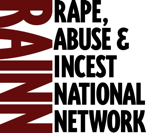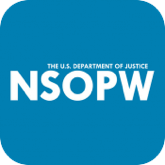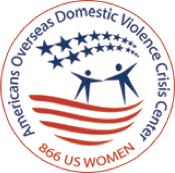Domestic Abuse, Sexual Violence and Substance Use

By The Orlando Recovery Center
Editor Sonia Tagliareni
Last Updated: September 25, 2023
Domestic violence is the intentional use of emotional, psychological, sexual or physical force by one family member or intimate partner to control another. Victims of domestic violence who struggle with addiction face significant barriers to receiving treatment, but programs that effectively address addiction and abuse-related trauma are available.
Domestic violence, also known as intimate partner violence, affects millions of people in the United States. It occurs when an individual causes sexual, physical or psychological harm to a current or former partner or spouse.
Intimate partner violence is characterized by coercive behavior, which is an act or pattern of acts such as assaults, threats, humiliation, intimidation or other forms of abuse used to harm, punish or frighten victims. This pattern of abuse often causes victims to fear what their abuser will do if they seek help.
The abuse may involve verbal, emotional and physical intimidation, destruction of property, maiming or killing pets, rape and physical attacks.
The four main types of domestic abuse include:
- Physical Violence
- Sexual Violence
- Stalking
- Psychological Aggression
Prolonged abuse can cause victims to develop lasting health problems, such as mental health disorders and eating disorders. Victims may also use drugs or alcohol to cope with the emotional toll of abuse. For some, substance abuse may progress to addiction.
According to the American Society of Addiction Medicine, research has found that both victims and abusers are 11 times more likely to be involved in domestic violence incidents on days of heavy substance use.
Most substance abusers are not abusive toward their partners. However, a large number of people who abuse their partners also engage in substance abuse.
Heavy substance use is a major risk factor for domestic violence. Abusing drugs or alcohol may exacerbate an abuser’s pre-existing violent tendencies, but no concrete evidence has shown that using drugs or alcohol causes domestic abuse.
Causes of Domestic Abuse
Domestic violence occurs when one romantic partner attempts to control or dominate the other.
It is important to note that there is no justifiable reason to ever engage in domestic violence.
However, abusers often use personal issues to defend their abusive behavior, including:
- Low self-esteem
- Jealousy
- Difficulty regulating anger
- Feelings of inferiority
Abuse is a choice. Those who perpetrate domestic violence choose to willfully engage in abusive behavior, and therefore they are the sole cause of domestic violence.
False Justifications for Domestic Violence
Many people claim external factors caused them to abuse their partner.
Common claims abusers use to absolve themselves of responsibility include:
Former Childhood Abuse
Abusers may point to their own childhood abuse as the reason they engage in domestic violence. However, the majority of childhood abuse victims do not abuse their loved ones as adults. Claiming that former childhood abuse is the cause of current domestic violence ignores personal responsibility and undermines the plight of childhood abuse survivors.
Loss of Control
Abusers may claim that a trigger or event caused them to snap or say that their abusive behavior is uncharacteristic of them. On the contrary, domestic abuse involves measured attempts to maintain control over an intimate partner.
Drugs and Alcohol
While drugs and alcohol may increase the likelihood that an abusive individual will act on pre-existing violent tendencies, substance abuse and intoxication never absolve an individual from responsibility for their actions.
Stress
Abusers may say stress caused them to lash out and abuse their partner as a way to deflect blame from themselves. But abusing a loved one instead of finding healthy ways to cope with stress is a personal choice.
Those who engage in domestic violence are responsible for their actions despite any reasoning they use to rationalize their behavior.
The Link Between Domestic Violence and Substance Abuse
The complex link between domestic violence and substance abuse creates unique challenges to treatment and encourages relapse in both behaviors.
Forty to sixty percent of domestic violence incidents involve substance abuse, according to a 2014 article published by the American Society of Addiction Medicine. More than one in five male abusers admitted to using substances before the most recent and extreme acts of violence, highlighting that drugs and alcohol may exacerbate violent tendencies.

Domestic abuse against female partners was
2 to 4 times higher
among men with alcohol problems than among other men.
Source: New York State Office for the Prevention of Domestic Violence

47% of domestic assaults
occurred after substance use compared to 31% of non-domestic assaults.
Source: New York State Office for the Prevention of Domestic Violence
Abused Women and Substance Use
Per the United States Bureau of Justice Statistics, women make up 85 percent of domestic violence victims. Substance-using women are more vulnerable to domestic violence than their nonusing counterparts. Similarly, women in violent relationships are more prone to have substance abuse issues than women in nonviolent relationships.
A study on expectant mothers in North Carolina revealed that domestic abuse victims were more susceptible to using substances before and during pregnancy compared to expectant mothers in nonviolent relationships. Additionally, numerous international studies show domestic violence is associated with negative outcomes for both pregnant mothers and infants.
According to the American Society of Addiction Medicine, 56 percent of abused women have psychiatric problems, and victims of intimate partner violence are vulnerable to alcohol and marijuana use. Numerous studies also found a correlation between intimate partner violence, morbid obesity and disturbed eating behaviors.
Women who go through physical abuse often deal with stress, post-traumatic stress disorder, anxiety, depression, sleep deprivation and physical pain. These women may resort to abusing substances to self-medicate their pain or dissolve their traumatic memories.
Because of the anxiety and depression associated with domestic violence, doctors typically prescribe tranquilizers, sedatives and painkillers to address the symptoms. Survivors of intimate partner violence may misuse these medications, leading to a substance use disorder.
Victims of domestic violence face additional risks for a number of health problems, including physical injury, sexually-transmitted diseases, eating disorders and suicide.
Substance-involved domestic abuse also includes:
- Introducing partners to substances of abuse
- Forcing partners to carry, sell or buy drugs
- Encouraging substance use as a form of control over partners
- Prostituting partners in exchange for drugs or money
- Preventing partners from seeking and receiving substance abuse treatment
Individuals may use drugs and alcohol to incapacitate their partner so they can perform sexual acts that their partner would otherwise not agree to. These acts can include videotaping sex, having sex with multiple partners and prostitution. Victims of domestic abuse may take drugs and alcohol to mitigate the abuse that may happen if they refuse their abuser’s sexual advances.
Coping with Sexual Abuse
According to a 2009 report by the Pennsylvania Coalition Against Rape, victims of domestic violence and sexual abuse turn to drugs and alcohol to escape the painful memories linked to their abuse. However, when the person stops using drugs, the symptoms may return, triggering the person to resume their drug use.
Substance use may be involved in sexual abuse in various ways, including:
- Using substances such as date-rape drugs to facilitate sexual assault
- Using drugs or alcohol prior to abuse
- Using substances to cope with the aftermath of a sexual assault
Sexual abuse and substance use attract a lot of stigma, which may create problems for individuals suffering from both. Society often ignores or shuns people who abuse drugs and alcohol. The stigma of addiction may hinder the person’s willingness to seek treatment and accentuate negative feelings of blame, shame and isolation.
Using Substances to Facilitate Sexual Abuse
Perpetrators of sexual abuse use drugs and alcohol as tools to assault individuals. When mixed with drugs, alcohol may reduce a person’s decision-making ability or render them unconscious. At times, a perpetrator will slip drugs in an unsuspecting individual’s drink to prevent them from recognizing a dangerous situation or resisting an attack.
Alcohol is the predominant drug used to facilitate sexual assault, and roughly half of reported sexual assaults involve alcohol use by the perpetrator, victim or both. Studies among convicted rapists, sexual assault predators and survivors have consistently found that in about half the cases, the men were drinking alcohol.
Perpetrators tend to prey on the vulnerability of their victims. They may attempt to increase the amount of drugs or alcohol a potential victim is taking or assault heavily intoxicated people. The attackers may also use alcohol as a way to justify their actions.
A study reported that 83 percent of female victims who were raped after they started using crack cocaine admitted to being under the influence of the drug at the time of rape. At least 57 percent of perpetrators were also intoxicated with crack cocaine when the rape occurred.
More than one-third of sexually active teens and young adults admitted to doing more sexually than they originally intended to while under the influence of substances, according to a survey by the Henry J. Kaiser Family Foundation.
Not remembering the events that led up to the incident may be traumatizing to victims of sexual assault, and they may blame themselves for their lack of awareness and use of substances.
Younger victims often fear the repercussions of underage drinking, hence they may never report the incident to the authorities. This can lead to a lot of internalized frustration and blame, which may cause the victims to resort to drugs and alcohol to cope with their troubles.
Using Substances to Cope with Sexual Assault
People have different strategies for coping with rough situations such as abuse, rape and trauma. While coping mechanisms can be positive, victims of sexual violence often manage their trauma in negative ways, such as avoidance and denial.
The stress from sexual violence can lead to long-term damaging effects to the brain and incite harmful behaviors such as bulimia, anorexia or self-harming. Some people may self-medicate to deal with the aftermath of abuse.
The need for self-medication stems from the stigma that society places on sexual assault cases that involve drugs and alcohol. In cases of self-medication, victims view substances of abuse as socially accepted, accessible and cheap solutions to their problems. Instead of quelling the undesired feelings, substances of abuse worsen trauma symptoms.
Survivors of sexual violence may self-medicate with drugs and alcohol to:
- Deal with the aftermath of child abuse
- Increase self-confidence and decrease feelings of loneliness
- Feel more in control of the situation
- Function or feel comfortable sexually
- Regain power and self-control
According to the Pennsylvania Coalition Against Rape report, 79 percent of rape survivors who drank alcohol became intoxicated for the first time after sexual assault, while 89 percent of rape survivors who used cocaine started using the drug after the assault.
The correlation between rape and substance abuse is apparent. One study found that 73 percent of women in residential substance abuse treatment programs reported they were rape victims.
Self-medicating to address symptoms of sexual and physical abuse can be destructive, and individuals who engage in this behavior are at risk of developing a substance use disorder.
Sexual Abuse and Addiction: A Vicious Cycle
Sexual abuse and substance use disorders share a complex relationship. Victims of sexual abuse may develop a substance use disorder, and those who use drugs and alcohol may be at an increased risk of sexual abuse.
Victims of physical and sexual abuse have higher rates of substance use disorders than those who have never experienced abuse. One study found that more than 80 percent of male survivors of childhood sexual abuse had a history of substance abuse. Women with any history of sexual abuse in childhood were about three times more likely than nonabused women to report drug dependency during adulthood.
Someone who used to drink in social situations may indulge in heavy drinking as a response to trauma from sexual abuse.
When compared with individuals who have not been raped, victims of rape are:
- 3.4 times more likely to use marijuana
- 5.3 times more likely to misuse prescription drugs
- 6.4 times more likely to use cocaine
- 10 times more likely to use hard drugs other than cocaine
Women may choose to consume drugs and alcohol because of physical and mental health issues, economic deprivation, loss of child custody and stigma. However, they tend to be more vulnerable to unsafe situations and less likely to seek help when they are intoxicated with alcohol or drugs.
The Pennsylvania Coalition Against Rape report stated that 60 percent of women receiving treatment for substance abuse reported having survived physical, sexual or emotional abuse as children.
The report also pointed out a correlation between substance abuse, poverty, homelessness, sex work, incarceration and mental health risks, citing that people in these situations face a greater risk of being sexually assaulted than those who do not.
Homelessness
Homelessness may be a contributing factor to substance abuse and drug-related offenses. According to the National Health Care for the Homeless Council, homeless people are more likely to experience substance use disorders and sexual abuse than the general population.
Homeless people face many difficulties that prevent them from receiving treatment and achieving long-term sobriety.
These challenges include:
- Lack of stable housing
- Lack of a safe environment for their children
- Inability to leave abusive relationships
According to the Pennsylvania Coalition Against Rape report, homeless women suffering from severe mental illnesses face a 97 percent lifetime risk for violence. The high incidence of violence often causes homeless women to develop depression, substance use disorders and post-traumatic stress disorder.
One study revealed that 25 to 30 percent of youth who were homeless or ran away from home were victims of sexual abuse before leaving home. These adolescents showed high rates of past-month alcohol and drug use.
Prostitution and Incarceration
Extreme poverty often forces women and girls to engage in prostitution to make ends meet. These women suffer from battery and rape at the hands of pimps, causing them to relapse into trauma. Female and male sex workers may trade sex for drugs or use drugs and alcohol as an escape from their perilous world.
In one study, nearly seven out of ten incarcerated women admitted to engaging in prostitution to feed their drug use disorder. Another study linked a longer duration of crack cocaine use and arrest for prostitution to the odds of having suffered a rape. The Pennsylvania Coalition Against Rape cited a study that found women with previous prostitution-related arrests were eight times more likely to have been rape victims than those without a history of prostitution arrests.
Women at risk for incarceration, including homeless women, sex workers and women with substance abuse problems, report very high rates of sexual abuse in early childhood and physical and sexual abuse in adulthood. Nine out of ten incarcerated women have a history of substance use.
Mental Health and PTSD
Child maltreatment, including sexual abuse, has been linked to depression, psychotropic medication use and poor mental health scores in later life, according to the Adverse Childhood Experiences Study. Having a history of traumatic events and more severe sexual abuse were related to a greater likelihood of the child developing PTSD and multiple substance use problems compared to developing PTSD alone.
In a sample of 100 people who were in treatment for substance abuse, more than one-third suffered from a dissociative disorder associated with physical or sexual abuse in childhood.
People with a history of sexual abuse experience increased risks of:
- Substance-related issues
- Depression
- PTSD
- Anxiety
- Suicidal thoughts
- Risky sexual behaviors
One study found that four out of five male survivors of childhood sexual abuse reported having a history of substance abuse, according to the Pennsylvania Coalition Against Rape. Women who endure sexual violence — even those without PTSD — have a higher chance of developing drug and alcohol problems. In cases where PTSD is involved, these risks magnify.
Barriers to Treatment
Domestic violence and sexual abuse bring about feelings of loneliness, shame, self-blame, fear, anger, lack of control, confusion and denial, which may discourage people from seeking treatment for their substance use disorder.

Societal Stigma
To many people, substance use disorders are not a disease but a moral issue. Social systems express little sympathy toward domestic and sexual abuse victims because many people wrongly hold the victims accountable for the abuse they have endured. Society often looks at the victim’s consumption of drugs and alcohol as the reason for the abuse, which can cause victims to blame themselves despite the fact that abusers are solely responsible for their actions.

Unreliable Memory
Some side effects of substance abuse include drowsiness and lethargy, which may result in victims not remembering the events leading up to their assault. Victims tend to think that their blurry memory will cause people to think they are not telling the truth, and some will never report the incident for this reason.

Fear of Repercussions
In domestic violence cases, the abuser may threaten to hurt or kill the victim if he or she tries to visit a rape crisis center or seek treatment for a drug use disorder. Therefore, victims may endure the abuse in silence while self-medicating with drugs and alcohol.
Sexual assault victims who have been engaging in illegal drug use or prostitution may not want to involve the authorities because they fear legal trouble. The repercussions for drug use may include arrest, deportation or loss of child custody.

Choosing Between Work and Treatment
Women who use substances have particular health needs but face unique financial struggles that may be a barrier to seeking treatment for addiction. Work hours typically coincide with treatment hours, which may make it difficult for women to choose between recovery and work.
Regular use of drugs and alcohol may also prevent people from receiving proper treatment from rape crisis centers and domestic violence programs. Some programs even refuse to serve homeless individuals.
Treating Substance Use
Disorders and Domestic Abuse
In order to treat substance use disorders among victims of domestic or sexual abuse effectively, it is important that health service providers are sensitive to this group’s unique needs. Addressing domestic violence or the underlying cause of substance abuse in rehab often proves to be more successful than addressing substance abuse alone.
Specialized treatment programs designed for survivors of domestic and sexual violence can greatly benefit people struggling with trauma and addiction. You should find a treatment facility that provides a safe and supportive environment and understands the link between substance abuse and domestic violence.
Therapists should address the client’s experiences with abuse early in the recovery process. This will empower clients and encourage them to be more open to learning healthy coping strategies for past trauma.
Resources for Victims of Domestic Violence and Sexual Abuse
A number of national and government organizations provide resources for victims of domestic and sexual abuse. Victims can call hotlines or visit websites that will direct them to the appropriate services. Most of these organizations provide additional resources to local domestic abuse care facilities where individuals can get help.
Sexual Assault

National Sexual Assault Hotline
Since its conception in 1994, The National Sexual Assault Hotline has helped over 2 million sexual abuse victims. The National Sexual Assault Hotline will connect you to a local sexual assault care facility that offers services such as sexual assault forensic exams, informal counseling and referrals to long-term treatment and support. The hotline is available 24 hours a day, seven days a week.

National Sexual Violence Resource Center
An initiative of the Pennsylvania Coalition Against Rape, the National Sexual Violence Resource Center assists coalitions, advocates and other organizations in preventing and eliminating sexual violence. The organization refers sexual assault victims to an appropriate support program in their community.

National Sex Offender Public Website
The National Sex Offender Public Website is an initiative supported by the U.S. Department of Justice and state, territorial and tribal governments, which work together to promote the safety of individuals through a search tool that provides information regarding sex offenders across the nation. They also offer information about sexual abuse and self-defense skills.
Domestic Violence

National Domestic Violence Hotline
The National Domestic Violence Hotline provides lifesaving tools and support for domestic violence victims. With the help of experienced advocates, callers can access crisis intervention information and referral services in 170 languages at any time of the day or night. The website also provides information about domestic violence and safety planning.

Loveisrespect
Formerly known as the National Dating Abuse Helpline, teen helpline Loveisrespect seeks to educate young people on preventing and ending abusive relationships. The website also offers resources for parents, educators, peers and victims to raise awareness regarding healthy dating behaviors and identify unhealthy and abusive patterns. Loveisrespect is a National Domestic Violence Hotline project.

American Overseas Domestic Violence Crisis Center
American Overseas Domestic Violence Crisis Center provides domestic violence and child abuse support to Americans living in foreign countries. The organization has a toll-free crisis line accessible from 175 countries. Its Sexual Assault Support and Help for Americans Abroad program specializes in dealing with sexual assault experiences of Americans living abroad.

National Coalition Against Domestic Violence
The National Coalition Against Domestic Violence’s mission is to promote zero tolerance for domestic violence. They seek to empower victims and survivors of domestic abuse and have numerous resources to help abused women. The resources include financial help and multiple health initiatives to boost victims’ confidence.
College Students

Center for Changing Our Campus Culture
Supported by the Justice Department’s Office on Violence Against Women, the Center for Changing Our Campus Culture is an online resource addressing sexual assault, domestic violence, dating violence and stalking on college campuses.

Know Your IX
Know Your IX seeks to empower students to end sexual and dating violence in their schools. The organization focuses on educating students about their right to a safe education free from violence. In addition to training student survivors to challenge their educational institutions to address violence and discrimination, Know Your IX also advocates for domestic abuse policy changes on a campus, state and federal level.

End Rape on Campus
End Rape on Campus aims to end sexual violence on campus by providing direct support for survivors, with a focus on prevention through education and on policy reforms at the campus, local, state and federal levels. The organization also advocates for fair and equitable policies and legislation for sexual assault and interpersonal violence.
Sources
- Campbell, J. (2002, April 13). Health consequences of intimate partner violence. Retrieved fromhttps://www.ncbi.nlm.nih.gov/pubmed/11965295
- Centers for Disease Control and Prevention. (2016, July 20). Intimate Partner Violence. Retrieved from https://www.cdc.gov/violenceprevention/i[…]nce/definitions.html
- Centers for Disease Control and Prevention. (2016, July 20). Intimate Partner Violence: Risk and Protective Factors. Retrieved from https://www.cdc.gov/violenceprevention/i[…]otectivefactors.html
- Irons, R. & Schneider, J.P. (1997). When is Domestic Violence a Hidden Face of Addiction? Retrieved from http://www.jenniferschneider.com/articles/domestic.html
- Living without abuse. (n.d.). Causes of domestic abuse. Retrieved fromhttp://www.lwa.org.uk/understanding-abuse/causes.htm
- Office for the Prevention of Domestic Violence. (n.d.). Understanding Domestic Abusers. Retrieved from http://www.opdv.ny.gov/professionals/abusers/excuse2.html
- Pennsylvania Coalition Against Rape. (2009). Substance Use and Sexual Violence. Retrieved from http://www.ncdsv.org/images/PCAR_SubUseA[…]ntervenResp_2009.pdf
- RAINN. (n.d.). Drug-Facilitated Sexual Assault. Retrieved fromhttps://www.rainn.org/articles/drug-faci[…]tated-sexual-assault
- Soper, R. G. (2014, October 6). Intimate Partner Violence and Co-Occurring Substance Abuse/Addiction. Retrieved from http://www.asam.org/magazine/read/articl[…]ance-abuse-addiction
- Substance Abuse and Mental Health Services Administration. (1997). Substance Abuse Treatment and Domestic Violence. Retrieved from http://files.eric.ed.gov/fulltext/ED443053.pdf
- The Crown Prosecution Service. (n.d.). Controlling or Coercive Behaviour in an Intimate or Family Relationship. Retrieved fromhttp://www.cps.gov.uk/legal/a_to_c/contr[…]e_behaviour/#content

 Insurance
Insurance About Us
About Us Our Facility
Our Facility Admissions
Admissions Programs
Programs Medical Detox
Medical Detox Inpatient Rehab
Inpatient Rehab Aftercare & Recovery
Aftercare & Recovery